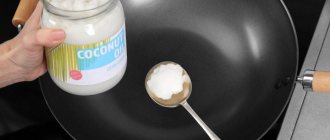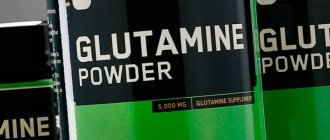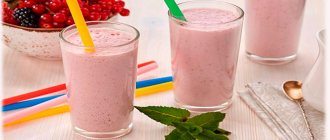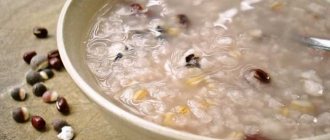Share:
Drinking strong drinks, unfortunately, is considered the norm in modern society. In this article, we will not talk about the prerequisites for this phenomenon, its social significance and the influence of alcohol on the moral character of the individual and society. But let’s try to consider a number of other issues that are important for those who lead a healthy lifestyle and play sports at an amateur or professional level. We will talk about how alcohol affects muscles and sports, is it possible to drink alcohol after a workout, and how long after a workout can you drink alcohol?
What you need to know about the effects of alcohol?
The active ingredient in any alcoholic drink is ethanol - ethyl alcohol. The intoxicating effects of various alcoholic beverages are associated with its entry into the human body. Stronger drinks contain high concentrations of ethanol (40-70%), less strong drinks, such as wine and beer, contain smaller doses (4.5-12%).
Emotional coloring of the state of intoxication
Probably every adult who has at least once taken a sip of alcohol knows that the more “concentrated” the drink is consumed, the faster the effect of intoxication occurs. By the way, about the effects. A person drinks alcohol in completely different life situations and it affects everyone in their own way. Some people are immediately in a better mood and have fun, while others feel an inexplicable sadness. There are also those who become overly aggressive and exhibit antisocial behavior. It is obvious that the emotional coloring of a person’s behavior does not depend on alcohol intake. After all, she is completely different. Alcohol only frees consciousness from boundaries and often the true “I” comes out.
Feeling worse
But, in addition to the not always acceptable emotional connotation, the state of alcoholic intoxication has many physiological aspects that do not have the best effect on the general condition of the body. This is deterioration in coordination of movements, weakness, lethargy, loss of control over speech and one’s own actions. The effects listed above are not accidental, because ethanol is a poison with a cellular mechanism of action. It is most toxic to the liver - it is this organ that is responsible for the metabolism of ethanol, that is, for its “processing” into products that can be excreted from the body.
Impact on the functioning of internal organs
What are the consequences of drinking alcohol for athletes? Everything is quite logical and simple - alcohol has a noticeable impact on the liver, which in athletes is already overworked due to constant physical activity and specific nutrition. Let's look at this point in a little more detail:
- The liver of a person who regularly performs certain loads and consumes slightly higher dosages of protein compared to the average person already works “by the sweat of his brow.” The fact is that during the breakdown of proteins, the amount of nitrogenous products in the body increases and the liver must “direct” the required amount to the synthesis of amino acids, and process all excess and make it available for excretion.
- This same vital internal organ is involved in the metabolism of fatty acids - it is fats that make up the membranes of body cells, the human nervous system and steroid hormones, which include sex hormones.
- Let's not forget about the metabolism of glucose - the main source of energy for the brain and muscle contractions. It also occurs in the liver. As you can see, she has quite a lot of tasks. And the liver of an athlete (no matter what direction) has twice as many of these tasks - after all, any student sets himself, first of all, the task of synthesizing new body tissues.
Now imagine that instead of performing the above functions, your liver must urgently neutralize alcohol. It will do this according to the principle of priority: when poison enters the body, the liver’s task is to “neutralize” it as quickly as possible. And for this, again, you need energy and nutrients, in general, everything that could go into the notorious synthesis. In a word, one conclusion suggests itself: alcohol and training are extremely incompatible things.
Extra calories
If a person regularly drinks alcohol during training, this has a bad effect on his weight:
- Fats are deposited in the body. Alcoholic drinks contain a lot of carbohydrates, but they are not transformed into glucose, since they are not valuable to the body. Ethanol disrupts the oxidation of fatty acids, after which they are converted into regular fats.
- Alcohol contains many calories. For example, 1 liter of beer contains 400 kcal, which corresponds to a single meal.
- Glucose concentration decreases. For this reason, metabolic processes slow down and appetite increases. The athlete feels very hungry and overeats. Due to decreased metabolism, food takes longer to break down.
- Decreased physical activity. After drinking alcohol, a person becomes drowsy, he wants to skip training and lie down to rest. Since metabolism slows down, calories that come from food take longer to burn. As a result, fats accumulate in the body.
- Alcohol impairs the functionality of the kidneys, liver, and digestive tract. For this reason, food is digested more slowly and fat tissue builds up.
In addition, the athlete's weight increases due to high-calorie snacks, which are often present at feasts.
Important! If you are invited to a celebration, then it is better to give preference to alcoholic drinks that contain few calories: dry wine, cognac and others.
How does alcohol affect muscles?
At the beginning of the article, we looked in general terms at how alcohol affects training and why it reduces athletic performance. Now we’ll tell you in more detail how alcohol affects muscles.
We have already mentioned the energy required to neutralize alcohol by the liver. This energy in the human body is represented by molecules of ATP-adenosine triphosphate - a universal compound, upon the breakdown of which this same energy is released. So, in order for your muscles to contract, you need the same ATP. Accordingly, the functional characteristics of muscles when drinking alcohol decrease simply because there is not enough “fuel”. Muscle growth is similarly affected when drinking ethanol - protein synthesis is a very energy-intensive process that requires a lot of energy. But not only that! Let us list the four main conditions for muscle growth (according to Professor V.N. Seluyanov):
- pool of free amino acids in the cell;
- the presence of hydrogen ions in muscle fiber;
- the presence of anabolic hormones in the blood;
- the presence of free creatine in muscle fiber.
Presence of free creatine
Let's start with the last item on our list - free creatine. Creatine is a high-energy compound synthesized in the liver from 3 amino acids: arginine, glycine and methionine. The result is a funny paradox: when drinking alcohol, the body does not have enough energy to synthesize the energy-intensive substance necessary to build muscles. Moreover, the listed amino acids are non-essential, which means they can be synthesized independently. But the problem is that they are all synthesized in the same liver, and it, again, is busy neutralizing ethanol, and all its resources are spent on this.
Anabolic hormones
As for the presence of hormones in the blood, in order to begin to act, they must enter the cell. And here, as an obstacle to them, a product of alcohol metabolism appears - acetaldehyde (exactly how it is obtained will be discussed below). This compound can freely pass into the cells of the body, disrupting the permeability of cell membranes. In other words, if acetaldehyde gets into the cell, it will be difficult for anything else to get there, including anabolic hormones. This means that even if you introduce anabolic agents from the outside, you will not get a 100% positive result from them. That is, in the case of simultaneous use of anabolic hormones and alcohol, most of the hormones will leave your body unchanged. In a word, both money and efforts will be thrown down the drain.
Hydrogen ions in muscle fiber
There should be a lot of hydrogen ions in the muscle fiber, but at the same time, they should be present there for a very limited time. We'll explain why now.
Hydrogen ions improve the permeability of the cell membrane, that is, they contribute to better penetration of anabolic agents (amino acids and hormones) into the cell. They also facilitate access of hormones to the hereditary information of the cell, thereby triggering protein synthesis in the muscles. Moreover, this happens due to the so-called “limited destruction” of the cell. And here we can see the negative side of strong acidification of the cell (that is, the accumulation of a large number of hydrogen ions) - these same destructions can be excessive. For this reason, hydrogen ions must be removed from the cell as soon as possible.
For this purpose, there is a lactate ion - when connected with hydrogen, it turns into lactic acid, since the cell membrane is permeable to this compound. In short, hydrogen ions can leave the muscle cell in the form of lactic acid. But what happens if you drink alcohol before your workout? The answer to this question is simple. It becomes more difficult to remove hydrogen ions, which is why they remain in the muscle fiber longer, causing much more “destruction” than expected. That is, your training causes a negative effect, during its course you damage the structures of your body, preventing them from recovering. Accordingly, you work at a disadvantage.
Pool of free amino acids
Regarding the pool of free amino acids, you need to consider the following. After drinking alcohol, due to the reasons listed above, you will not have very many amino acids in your cell. One part of them will be deaminated, that is, converted into sources of energy and NH2 groups in order to neutralize alcohol. And the second part simply will not get to the cell due to its poor permeability.
So, let’s summarize how post-workout alcohol affects muscles. Since the processes of energy supply to the cell are affected, and the utilization of acidic products of muscle contraction is impaired, the synthesis of anabolic hormones, as well as their access to the cell, is difficult, the performance of your workouts will suffer, to put it mildly.
Are there any benefits from alcohol?
With enviable regularity, “sensational” news appears in publications about how useful it is to sometimes sip a glass of beer or drink 50 grams of cognac. With regular consumption of alcohol, the ability is attributed to:
- reduce the risk of stroke and heart attack by 25%;
- increase the level of “good” cholesterol in the blood;
- prevent the development of type II diabetes mellitus;
- prevent the formation of gallstones.
At the same time, all researchers note that we are talking about small doses of alcohol. And seven glasses drunk in one Saturday evening are not equivalent in effect to one glass, but drunk every day during the week.
For alcoholic drinks to show their benefits, you need to drink a little, but at least four times a week. For a person who lives by sports, this is unacceptable!
The claim that beer is beneficial after a workout is a myth! Not a single study has been able to prove the beneficial effects of the drink on the athlete’s body. As before, the best drinks after active training: clean water, fruit drink and juice. If you cannot do without beer, it is better to choose dark varieties rich in antioxidants.
The effect of alcohol on excess weight
The term excess weight usually means an excess amount of subcutaneous fat, or, more simply put, fat. Moreover, excess accumulation of fat occurs not only under the skin, but also in body cavities, thereby squeezing internal organs and reducing the flow of blood to them. Alcohol promotes weight gain by increasing the fat component. Read on to find out how exactly this happens.
Increased appetite
Once in the stomach, alcohol irritates its walls. At the same time, the taste of ethanol-containing drinks is bitter (any other taste can be mixed with it, but bitterness is present in any case). Both of the above circumstances stimulate appetite, acting on two independent mechanisms for stimulating eating behavior. The result is that you feel hungry. Now let’s remember what was said at the very beginning of the article - you lose self-control, due to the fact that the cerebral cortex, which forms your personality, turns off (to one degree or another, depending on the dose), your subcortex takes over , a kind of inner animal. It consists of simple basic instincts, and, what is most unpleasant, the less control the cortex has, the greater the likelihood that the subcortex will satisfy its needs at any cost. Accordingly, you will eat much more than you need, because each new portion of alcohol stimulates your appetite anew. And self-control, accordingly, decreases.
Fluid retention in the body
Another factor that contributes to increased body weight is fluid retention due to systematic alcohol consumption. This is due to the fact that ethanol promotes tissue dehydration - in other words, increased water consumption. The feeling of dry mouth does not come easily. And since our body adapts to what we do with it, with the systematic use of ethanol, the production of antidiuretic hormone, which is responsible for maximum retention of water within the bloodstream, increases. Because of this, in turn, blood pressure rises and the load on the heart increases, even against the background of ordinary household stress. What can we say about sports training!
Harm of alcohol for athletes
The harm of alcohol in sports lies not only in the manifestations listed above. It is worth knowing that high doses of alcohol tend to destroy muscle fibers.
Therefore, if you play sports during the day and spend your evenings in the company of bottles of alcohol, then at a minimum you cannot expect an increase in results, and at most you can earn exhaustion, since the body will not be able to recover in such conditions.
It is also worth considering the combination of alcohol with used sports supplements or pharmacological support. As mentioned above, not all types of sports nutrition are compatible with alcohol. If you use any steroid stimulants, drinking alcohol can be life-threatening.
Can I drink after a workout?
Is it possible to drink alcohol after a workout? This is rather a rhetorical question. After all, any sane person who has carefully read all the previous sections of the article will understand why you should not drink alcohol after a workout, and even more so, before it.
Even one bottle of beer drunk in the evening can lead to reduced strength performance the next day after training after drinking alcohol. Sports exercises themselves place a significant load not only on the muscles, but also on most of the internal organs. The heart, lungs, and other organs, they all begin to work in almost maximum mode and they need time to recover. If at this time the body has to give up a fair amount of energy in order to get rid of alcohol and its breakdown products, it is not difficult to guess about the possible negative consequences.
A real athlete who trains regularly, and not occasionally, should not even wonder how long after training he can drink alcohol. After all, even if you don’t drink alcohol immediately after a workout in the gym, but, for example, after a couple of hours or the next day, then it may not affect the last workout, but the next one, as we have already written, will have to be cancelled.
Is it possible to combine alcohol and sports?
Of course, no one has ever died from one glass of beer. But, if training has long become an integral part of your life, it’s time to seriously think: what exactly do you expect from working out in the gym?
The only goal is to feel muscle tone and maintain weight within normal limits - drink for your health! But not on training days and in moderation.
But more global goals, for example, a noticeable reduction in body weight or participation in competitions, pose the question bluntly: is a couple of cans of beer really worth it to negate long hours of grueling work on your body?!
And yet, some athletes like to break the rules. So, in 1989, Canadian students decided to have fun: combine running and partying. This is how the “Beer Mile” appeared: a circle around the stadium, a glass of beer, and so on four times. The idea caught on and is still alive: while America runs in the company of a foamy drink, Europe organizes wine races of 10, 21 and even 42 kilometers.
Alcohol metabolism
Ethanol, having entered the stomach, is absorbed into the blood, from which it enters the liver through the portal vein. Here a series of chemical reactions occur to ensure that the poison (which is ethanol) is neutralized. There are three pathways for alcohol metabolism:
- alcohol dehydrogenase enzyme;
- through the cytochrome P 450 system;
- liver catalase.
Accumulation of harmful elements
The largest amount of ethanol is metabolized via the first pathway. The ethanol molecule is split into an acetaldehyde molecule and into the reduced coenzyme NADH. Acetaldehyde is further converted into acetic acid. During this transformation, hydrogen peroxide is formed, which is a free radical and, accordingly, the culprit of direct cellular damage.
Acetic acid itself is converted into acetyl coenzyme A, a universal substrate for your body, which can then be used for the synthesis of fatty acids. Or it can be used to produce one molecule of ATP. It would seem that this is the benefit! It turns out to be a whole ATP molecule! Don’t rush to rejoice - at least 3 ATP molecules must be spent to produce it. Total – minus 2 ATP molecules. Despite the fact that alcohol does not metabolize all at once, but as it is absorbed into the blood and enters the liver. And the amount of energy and substrates needed to metabolize alcohol is limited.
Acidosis
Thus, a large amount of acidic products of incomplete metabolism of alcohol accumulates in the blood of an ethanol consumer: acetic acid, acetaldehyde, hydrogen peroxide. All this shifts the pH of the body to the acidic side, and for our body this condition is “emergency”. It is called acidosis. In this state, all metabolic processes in your body are much less efficient, including your brain - this is where the feeling of euphoria comes from, impaired speech, gait, and mental activity. When acidosis becomes critical, metabolic processes in your brain stop and you simply lose consciousness. At the same time, brain cells partially die, since due to severe acidification, the process of cellular respiration in them becomes impossible. In addition, each nerve cell must contain a certain amount of water. And we remember what happens to liquid when drinking alcohol from the previous sections.
Deterioration of nerve impulses
By the way, not only the brain itself consists of nerve cells, but also the pathways that lead from it - the peripheral nerves. Strictly speaking, they are processes of nerve cell bodies, and intertwining with each other, these processes form peripheral nerves. These are a kind of “wires” connecting the brain with all organs of the body. Including muscles. Deterioration in the quality of the “signal” leads to a deterioration in the quality of movement. You cannot transmit a high-quality impulse along a nerve fiber due to the fact that the cell that receives this impulse does not work correctly. Or it doesn't work at all.
Interesting fact! Scientists have noticed that people with large body weight eliminate alcohol from the body at a more vigorous rate than their thinner counterparts.
Research
In 2014, studies were conducted proving the effect of alcohol on athletic performance and muscle growth. Scientists have concluded that when drinking alcohol, protein production decreases. Because of this, the muscle recovery process slows down.
The volunteers were men without medical contraindications, who were divided into 4 groups:
- Rest. The subjects were not required to engage in physical activity, nor were they provided with special food or alcohol.
- Pro. I did all the necessary workouts, receiving 25 g of whey protein before and after.
- Alc-pro. Like the second group, they received protein and exercised, but at the same time they had to drink approximately 300 ml of vodka in small portions.
- Alc-cho. Instead of protein, they received 25 g of carbohydrates in the form of maltodextrin and alcohol, in the same amount as the 3rd group.
The training was divided into three types:
- power;
- cyclic (endurance – 30 minutes);
- interval.
The men who did not receive alcohol drank an equivalent volume of orange juice.
Does alcohol affect testosterone?
As briefly mentioned above, alcohol affects testosterone levels, reducing it for a number of the reasons mentioned above. However, I would like to focus on a drink that, for some reason, is not classified as “serious” alcohol. We're talking, of course, about beer.
This drink is brewed from malt and hops. Hops are an excellent source of phytoestrogens - substances of plant origin, the structure of which is very similar to female sex hormones. With a systematic increase in the concentration of such sex hormones in a man’s body, his hormonal profile changes not for the better for him. Female-type fat deposits appear, and visceral fat (around the internal organs) is actively deposited. In this case, behavior becomes sluggish, aggression and the desire to be first gives way to laziness and complacency. Remember the medieval monks - classic beer drinkers with round bellies. As for them, there is another important point - for the monks the issue of decreased libido was very relevant. Beer successfully solved this issue, because beer was brewed primarily in monasteries.
'Fascinating' statistics about alcohol
Here are the numbers VTsIOM tells us about alcohol:
- Over the course of a year (from 2020 to 2020), the share of non-drinking Russians decreased from 40% to 33%. 67% of citizens drink from time to time.
- At the same time, 29% of respondents admitted that they smoke (16% of them more than 1 pack a day).
- The Russian Federation ranks 16th in the World Health Organization's ranking of the world's heaviest drinking countries (11.7 liters of alcohol per capita).
Moreover, the poverty of the country affects the amount of alcohol consumed only indirectly. For example, Nigeria is a poor African country, where, in addition, 50% of Muslims have become the highest drinkers on the African continent (10th in the world according to WHO).
The culture of drinking alcohol greatly influences the statistics (I’m tempted to say, what the hell is the culture of drinking?). For example, in Belgium, where beer is the national drink, there are more than 1,600 types of alcohol, and beer festivals are held (as in Germany).
Belgium became the first country in the world in terms of the amount of alcohol consumed per capita (according to the European publication Statista). According to WHO, the first country in this dubious ranking is the Republic of Moldova (15.2 liters per person per year).
In order to clear the atmosphere a little, I can say that the amount of alcohol consumed per person per year is decreasing.
For example, in Russia:
- 2014: 15.76 liters per person per year.
- 2016: 15.1 liters per person per year.
- 2018: 11.7 liters per person per year.
Thus, in Russia the amount of alcohol consumed per person per year decreased by 34.7% in just 5 years.
This, in my opinion, is connected not so much with the promotion of a healthy lifestyle, but with increased prices for food and everything else. People simply refuse things that are less necessary for them.
Drank before training: what to do?
Considering all of the above, if an athlete drank the day before and has a workout ahead of him, then the most optimal and reasonable course of action is to skip the lesson, since alcohol before a workout is simply unacceptable. Instead, it is better to take a shower at a comfortable temperature, stock up on a 1.5-liter bottle of mineral water and the same bottle of kefir. Drinks should be drunk in small portions, alternating water with kefir. At the same time, it is necessary to take a double dose of a vitamin complex containing vitamin B 12. This must be done for the following reasons:
- Mineral water will replenish the deficiency of liquid and ions.
- Kefir will replenish lactate reserves, as one of the most actively consumed substrates when consuming ethanol.
- Vitamin B12 will help restore the nervous system and restore the speed of transmission of nerve impulses.
During the rest of the day, it is preferable to consume lean meat and cottage cheese in sufficient quantities, eating vegetables or drinking vegetable juice.
The training process can be resumed only the next day. At the same time, the training should be easy. It is advisable to use narrowly localized exercises for small muscle groups. The ideal option is the arm muscles, since their activation improves cerebral circulation, and the abdominal muscles - the liver will also require an increased concentration of oxygen.
Remember, it doesn’t matter what type of workload you plan to do. After drinking alcohol, especially in large quantities, it is better to abstain from it.
Minimum abstinence time
Currently, science does not have a large number of studies that would be aimed at studying the effect of alcohol on the athlete’s body. However, most experts agree that drinking immediately after exercise will ruin all your efforts and even harm you. HIIT takes a lot of energy, increases the heart rate to abnormal levels and requires recovery.
Therefore, you need to delay drinking alcohol for at least an hour after finishing your workout. This is the period that is critical for recovery. He demands electrolyte drinks instead of beer and tequila. Together with sweat, not only water leaves your body, but also important macroelements: sodium and potassium. Orange juice without sugar, diluted with water, or mineral water without gases helps to replenish the electrolyte balance in the body.
Permissible doses during training
Not all athletes follow the rules and refuse alcoholic beverages. Combining ethanol and sports is possible if the volume drunk is small, but it will be impossible to achieve the desired results during training.
If a male athlete weighing 75 kg takes 100 ml of alcohol, it will take 4-6 hours to completely remove it from the body. During this process, you will need to give up physical activity. However, even after this time, unpleasant symptoms will appear during exercise in the form of nausea, dizziness and weakness, sometimes leading to convulsions. The training will take place at half strength.
If the volume exceeds 100 ml, it will take 2 days to clear toxins, after which you can only resume sports activities.
YOUR Narcologist recommends: How to reduce the negative impact?
For professional athletes and bodybuilders, alcohol is prohibited. For people who are keen on fitness and going to the gym, alcohol in small quantities is not prohibited. It is optimal to drink 1 glass of wine once a month. If you are planning an event where you will need to drink, there are several tips to help reduce the negative effects of ethanol:
- You should have a snack, but the food should not be fatty; preference is given to poultry and meat.
- If the feast takes place at night, then the food should also be protein.
- In the morning you should eat protein rich in calcium, iron and phosphorus.
- When drinking alcohol, you should wash it down with water to avoid dehydration.
- For breakfast you should give preference to juice and mineral water.
- It is better to avoid visiting the gym for 2-3 days.
Decreased growth hormone production
Growth hormone (somatotropin) affects the construction of muscle structure and stimulates cell growth. It is produced every three to four hours while a person sleeps and is responsible for the following functions:
- regulates carbohydrate metabolism;
- stimulates protein synthesis;
- helps bone tissue absorb calcium;
- reduces subcutaneous fat mass;
- increases the volume of muscle tissue, retaining fluid;
- increase in dry body mass.
However, alcoholic drink worsens the quality of sleep, preventing the formation of somatotropin by 50-70% for another two days after consumption. Decreased growth hormone production affects various processes.
Low levels of the hormone lead to a failure of these functions, which prevents the desired results from being achieved. After twenty years, its production decreases over time, and in old age the body produces very little of it. Drinking alcohol speeds up the reduction process.
Decreased testosterone production activity
The effects of alcohol also affect testosterone, which is necessary for all activities aimed at developing strength and endurance. To gain muscle mass, protein synthesis is required, triggered by the male hormone. Any strength load requires testosterone, and ethanol suppresses the production of enzymes involved in the formation of testosterone by 23% - these figures were also obtained during an experiment on rats.
When there is not enough hormone, then:
- muscle recovery slows down after training;
- strength indicators decrease;
- abdominal fat appears;
- there is a feeling of constant fatigue;
- muscle mass decreases;
- mood worsens.
Under the influence of alcohol, the body accumulates estrogen, which reduces the amount of testosterone. Studies say that in the blood of military personnel who often liked to drink, the amount of testosterone was low and estrogen was high.
Testosterone and ATP (adenosine triphosphate) are interrelated: the hormone builds muscle structure when there are sufficient energy reserves. The cell contains:
- cytoplasm, consisting of protein and water;
- a nucleus with many receptors and hereditary information.
Androgen receptors constantly move between the nucleus and the cytoplasm, and if they do not have energy, then anabolic muscle growth stops.
The adenosine triphosphate molecule is not immediately consumed during training. During breaks, it is partially restored, but several approaches can create a fairly strong load. Energy reserves are depleted. During intensive exercise lasting an hour, a large amount of cortisol, the fatigue hormone, is released in the body, and further training can be harmful. ATP continues to work afterward, replenishing the costs of muscle tissue development. Recovery takes on average 1-4 days.
Due to a lack of testosterone, a state of overtraining occurs that requires serious treatment. And alcohol negatively affects the formation of the hormone.
It is worth adding that one glass of wine slightly increases the level of the hormone, and moderate consumption does not have negative consequences. With chronic alcoholism, the rate of testosterone breakdown in the liver increases fivefold.










